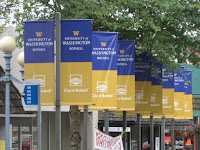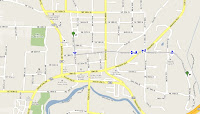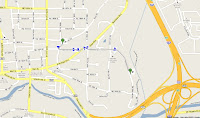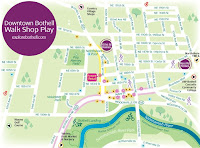There seems to be more discussion everyday regarding walkable communities. Why is this topic on peoples mind? It can only be the benefits of a walkable community that makes this issue important.
Benefits are of course different for each of us, but for the sake of discussion I have attached a list of 10 benefits that seem to show up in almost every list. From this list I will go into further detail on each in subsequent blog posts.
So here are the most common benefits of walkable communities. Please feel free to provide your own or comments about these!!!!
1. Less traffic congestion: According to the Nationwide Personal Transportation Survey, 25 percent of all car trips are less than a mile. Sidewalks and safe crossings enable you to reach destinations on foot, which reduces traffic congestion and air pollution.
2. Higher property values: Homes in pedestrian-friendly communities make good investments. Sidewalks and quiet, tree-lined streets boost the value of your home. A 1999 study by the Urban Land Institute showed buyers willing to pay a $20,000 premimum for homes in walkable/ pedestrian friendly areas verus homes in surrounding areas.
3. Lower transportation costs: Fewer car trips = lower gasoline costs. Each time you walk instead of drive, you save money on gas and maintenance.
4. Stronger local businesses: A walkable downtown attracts more stores and creates a thriving place to shop, eat, and find entertainment. Dense, walkable neighborhoods offer places that are easier for pedestrians to shop at many stores in one trip, eliminating the need to drive between destinations. Furthermore, walkable communities seem to attract tourists who are interested in these active, safe and interesting neighborhoods. In turn, tourism helps maintain a thriving local economy!!!
5. Sense of community: Where pleasant walking conditions exist, residents are more likely to know their neighbors and feel connected to their community. In addition, walking increases social capital by promoting face-to-face interaction with neighbors. According to studies published by Cascadia Scorecard, for every 10 minutes a person spends in a daily car commute, time spent in community activities falls by 10 percent.
6. Reduced crime: Vibrant, walkable neighborhoods have more eyes on the street both in the form of people and the orientation buldings making Walkable neighborhoods a safe place to walk, work, live and visit.
7. Better health: People who live in walkable communities are more active and enjoy cleaner air. Studies are showing that the residents of walkable communities have a lower BMI number (Body Mass Index) than that of someone who lives in a more suburban neighborhood. Additionally, residents of walkable neighborhoods drive less and suffer fewer car accidents, a leading cause of death between the ages of 15–45.
8. Less stress: Making multiple car trips per day, shuttling children and driving in commuter traffic can be a stressful undertaking. On the otherhand, Being outdoors and walking with your family to your desinations can improve your health, reduce stress, save time and provide quality time together as a family.
9. Less pollution: Walking creates no harmful emissions.
10. Increased pedestrian safety: With increased pedestrian activity comes improved pedestrian facilities which in turn leads to more pedestrians which ultimately leads to streets that are safe to cross and comfortable for pedestrians, of all ages and abilities.
 It is common knowledge that most households spend more than necessary on their vehicles. The American Automobile Association estimates that operating a typical SUV exceeds $8000 per year. Increase your commute distance and this can easily reach $10,000 - $12,000 based on the True Cost of Driving Calculator.
It is common knowledge that most households spend more than necessary on their vehicles. The American Automobile Association estimates that operating a typical SUV exceeds $8000 per year. Increase your commute distance and this can easily reach $10,000 - $12,000 based on the True Cost of Driving Calculator.
















